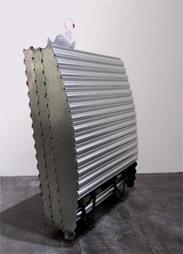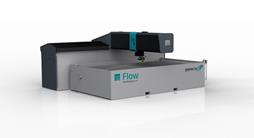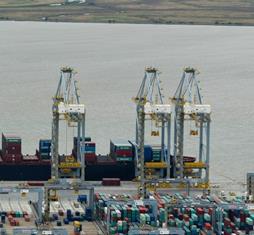How laser cutting began
24-01-2018
1st May 2014
How laser cutting began
Laser cutting is a technology which uses a laser to cut materials. It is most often used for industrial manufacturing applications, but is also now being used by schools, small businesses, and hobbyists. Laser cutting works by directing the output of a high-power laser, via a computer at the material to be cut. The material then burns or vaporizes and is then blown away by a jet of gas, leaving an edge with a high-quality surface finish. Industrial laser cutters are used to cut flat-sheet material as well as structural and tube materials.
In 1965, the first production laser cutting machine was used to drill holes in diamonds. The machine was made by the Western Electric Engineering Research Centre. In 1967, the British pioneered laser-assisted oxygen jet cutting for metals and in the early 1970s they began to cut titanium for aerospace applications. At the same time CO2 lasers were adapted to cut non-metals, such as textiles.
There are three main types of lasers used in laser cutting, the CO2 laser, which is best suited for cutting, boring, and engraving and the neodymium (Nd) and neodymium yttrium-aluminium-garnet lasers, which are identical in style but differ in application. Nd is used for boring where high energy but low repetition is required. The Nd-YAG laser is used when very high power is required and for boring and engraving. Both CO2 Nd and Nd-YAG lasers can be used for welding. Variants of CO2 lasers include fast axial flow, slow axial flow, transverse flow, and slab.
CO2 lasers are usually "pumped" by passing a current through the gas mix (DC-excited) or using radio frequency energy (RF-excited). Dielectric heating is newer and is now more popular. Since DC designs require electrodes inside the cavity, erosion of the electrodes and the plating of electrode material can occur on optics but RF resonators have external electrodes and are not prone to these problems. CO2 lasers are used for industrial cutting of materials including mild steel, aluminium, stainless steel, titanium, paper, wax, plastics, wood, and fabrics. YAG lasers are primarily used for cutting and scribing metals and ceramics.
In addition to the power source, the type of gas flow can affect performance as well. In a fast axial flow resonator, the mixture of carbon dioxide, helium and nitrogen is circulated at high velocity by a turbine or blower. Transverse flow lasers circulate the gas mix at a lower velocity, requiring a simpler blower. Slab or diffusion cooled resonators have a static gas field that requires no pressurization or glassware, which saves on the replacement of turbines and glassware. The laser generator and external optics (including the focus lens) all require cooling. Depending on the system size and configuration, waste heat may be transferred by a coolant or directly to air. Water is a commonly used coolant, usually circulated through a chiller or heat transfer system.Visit the Essex Laser Ltd website for more information on How laser cutting began





